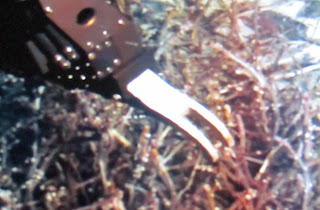On May 31, 2009 a robotic sub called Nereus reached the bottom of Challenger Deep in the Marianas Trench, located in the western Pacific Ocean south of the island Guam. This trench is basically unexplored. We have had more vehicles and have researched the surfaces of both the Moon and Mars more than we have explored the Marianas Trench.
It is the deepest abyss on Earth at 36,000 feet deep (11,000m), more than 2km (1.2 miles) deeper than Mount Everest is high. At that depth, pressures reach 1,100 times those at the surface. The trench developed when the Pacific plate started subducting under the Mariana plate.
As a result, this is only the third vehicle to have ever made the trip to its crushing depths. In January 1960, Jacques Piccard and Don Walsh made the first and only manned voyage in a Swiss-built bathyscaphe known as the Trieste. The vessel consisted of a 2m-diameter (6ft) steel sphere containing the crew suspended below a huge 15m-long (50ft) tank of petrol, designed to provide buoyancy. During the nine-hour mission, the two men spent just 20 minutes on the ocean floor; enough time to measure the depth as 10,916m (35,813 ft). When near the bottom, one of the Plexiglas panels cracked -- but held. No manned submersible has ever repeated the dive. However, 35 years later, a Japanese remote-controlled vehicle called Kaiko returned, setting a depth record for unmanned exploration. The Japanese craft was lost in 2003 on an unrelated dive when a cable connecting it to its control ship snapped. Currently, all the other deep-rated vehicles can descend to 21,325 feet (6,500m), allowing scientists access to 95% of the seafloor, but not to the Challenger Deep.
The morning of the historical dive provided perfect weather.
The unmanned vehicle was remotely operated by pilots aboard a surface ship via a lightweight fibre-optic tether to the research vessel Kilo Moana. This allows the submersible to make deep dives and be highly manoeuvrable.
During its dive, the vehicle recorded a depth of 10,911m (35,797ft). It was also able to recover a sediment core, rocks, and record pictures of life including a sea cucumber, a worm and a shrimp. During a test dive to 9,000 meters the crew was able to collect biologic specimens. While on the bottom, however, the suction tube missed a couple of specimens.
Here is a graphic showing the specimen collection equipment.
Here are shots from the collecting that took place during the test dive.
The critter on the left is the one that got away. Next to him is a rubber band that broke off the specimen collection bag.














No comments:
Post a Comment